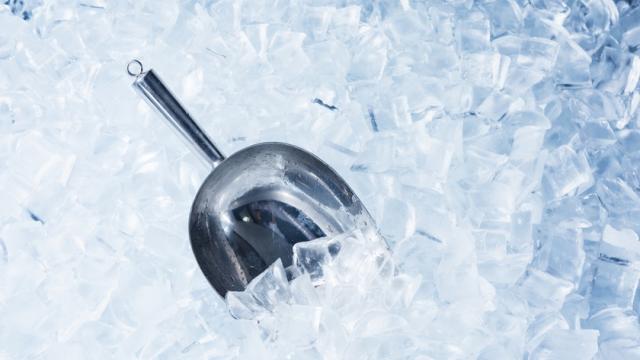Ice machines are widely used in restaurants, hotels, hospitals and other commercial facilities. However, traditional water-cooled units use a lot of water. Air-cooled units use significantly less water while still providing reliable service.
How Air-cooled Machines Work
In an air-cooled unit, a cold evaporator plate acts as a mold. Evaporating refrigerant cools the plate in contact with liquid water forming ice. Fans move air across the condenser heat exchanger to remove heat from the refrigerant. When ice is ready to be dropped into a bin, warm refrigerant from the condenser is temporarily rerouted back to the evaporator. Ice in contact with the evaporator melts slightly and drops away. The process then repeats.
Comparing Operating Costs and Maintenance Needs
With no cooling fans, water-cooled units use roughly 15% less electricity. However, they can use more than 100 gallons of water for each 100 pounds of ice produced, primarily for cooling. ENERGY STAR®-certified air-cooled ice makers use a maximum of only 15 to 25 gallons per 100 pounds of ice, depending on the type. That's a reduction in water use of at least 75% compared to water-cooled units.
Water-cooled machines can also require a lot of maintenance. Without a cooling tower, cooling water lines must be filtered to reduce the concentration of dissolved minerals in the unit, requiring frequent cartridge replacements. Occasional cleaning of water-cooled units to remove deposits is still necessary even with filters.
Air-cooled units are simpler to install and maintain. However, the machines need to be installed with a certain amount of space between them and surrounding objects. In addition, a warm environment reduces output significantly. A remote condenser is best if air temperatures regularly exceed 80°F. Remote condensers are generally mounted on the roof, removing noise and a heat source from the surrounding environment.
Types of Air-cooled Units
There are two types of air-cooled machines — batch-type and continuous-type. ENERGY STAR-certified batch-type ice makers are about 10% more energy efficient and 20% more water efficient than standard models. Certified continuous-type ice makers are about 16% more energy efficient. ENERGY STAR air-cooled machines consume from 4 to 7 kWh per 100 pounds of ice produced in the capacity range of 200 to 800 pounds of ice per 24 hours. Higher capacity units are more efficient.
There are three main configurations for both types of ice machines:
1. Ice-making head (IMH)
2. Remote condensing unit (RCU)
3. Self-contained unit (SCU)
Air-cooled IMH units cost around $3 to $6 per 100 pounds/24 hrs of ice capacity. Air-cooled SCU units are roughly twice as expensive for the same capacity.
Features to Look For
When purchasing an air-cooled ice machine, look for front-facing condensers that are easily accessible for cleaning. Some models come with an auto-cleaning feature, which eliminates much of the day-to-day cleaning labor. New technologies include machines that make spherical ice and machines capable of remote monitoring and sanitation using UV-C irradiation.
Air-cooled ice machines can provide the reliability, capacity and consistency your business requires, all while reducing water consumption.
February 2024 Connections Newsletter
From industry trends and best practices to sustainability initiatives, our monthly Connections Newsletter provides valuable insights, updates, and resources to support our large business customers.
Full Newsletter